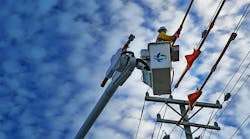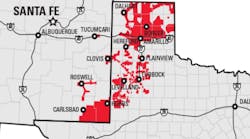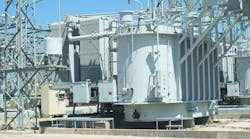Duke Energy Carolinas has implemented new rates for North Carolina customers starting Jan. 15, as approved by the North Carolina Utilities Commission (NCUC).
The NCUC approval covers multiyear rates, along with incentives and penalties to hold the utility accountable for reliability and other performance metrics.
The rates are below the national average, irrespective of the company accomplishing about $7.7 billion in upgrades for a more resistant electric grid to deal with outages and facilitate power restoration.
The NCUC has approved a net increase in retail revenues in year one of about $436 million (8.3%), followed by $173 million (3.3%) in year two and $165 million (3.1%) in year three.
An interim rate adjustment implemented on Sept. 1 is reflected in customer bills. Starting January 15, the change from current rates for a typical residential customer using 1,000 kWh per month will be an increase of $10.04, from $130.29 to $140.33 per month, followed by a $4.19 increase on January 1, 2025, and a $4.10 increase on January 1, 2026, for a total of $148.62 by 2026.
According to the Edison Electric Institute, the national monthly average for typical residential customers was $171.67 as of Jan. 1, 2023.
The NCUC has ordered Duke Energy Carolinas to establish a Customer Assistance Program (CAP) to reduce bills for the utility's most vulnerable customers through a $42 monthly credit for 12 months.
Customers assisted by the Low-Income Energy Assistance Program (LIEAP) or the Crisis Intervention Program (CIP), which are federally funded initiatives for those at or below 130% and 150% of the poverty level, respectively, will be enrolled in CAP beginning January in partnership with the North Carolina Department of Health and Human Services.
Duke Energy will also refer CAP customers to weatherization and energy efficiency services for long-term solutions to reduce energy usage.
Duke Energy shareholders will contribute $10 million for health and safety repairs preventing low-income customers from qualifying for weatherization and other energy efficiency improvements, as part of a settlement in the rate cases for both Duke Energy Carolinas and Duke Energy Progress.
Duke Energy shareholders are contributing an additional $6 million to the Share the Light Fund supporting North Carolina customers.
Duke Energy Carolinas has established time-of-use rate options and energy efficiency programs to help lower their costs and reduce energy use:
- Time-of-Use rates incentivize customers to shift electricity use to periods of low energy demand with options for commercial and industrial customers too.
- A Tariff on Bill program called Improve & Save will enable residential customers, owners and renters, to pay for energy efficiency upgrades through their Duke Energy bill. The program will incentivize customers to replace inefficient electric HVAC systems or insulation to ensure their annual savings are greater as compared to the monthly cost of the upgrades, improving their service while lowering their bill. The program is expected to be introduced in first quarter 2024 with a dedicated webpage for the program.
"Our goal with these programs is to help offset the rate increase as much as possible by giving customers more control over their energy use," said Kendal Bowman, Duke Energy's North Carolina president. "The programs are designed to reduce costs across the entire system, benefiting all customers."
The Duke Energy Progress order also includes the implementation of performance incentive mechanisms (PIMs), which were first allowed by North Carolina's clean energy legislation (HB951).
PIMs improve state policy goals through financial incentives and penalties encouraging utility performance in areas of shared interest with customers.
The NCUC has approved three PIMs with annual incentives increasing to $15 million in potential rewards as well as $15 million in potential penalties for Duke Energy Carolinas across three areas:
- Reliability - holds the utility accountable to maintain expected levels of reliability through graduated penalties to be distributed to customers if reliability declines below target levels.
- Renewables Integration and Encouragement – encourages adoption of clean energy resources across three categories:
- DER Integration – advances net energy metering (NEM) distributed energy resources (DERs), which allow customers to access zero-emissions generation, such as rooftop solar, at their homes and businesses, reducing their electricity consumption from the grid.
- Large Customer Renewable Program Encouragement – supports large commercial and industrial customers, educational institutions and local governments having clean energy goals and want access to renewable energy.
- Utility-Scale Interconnection – incentivizes solar and solar-plus-storage interconnections above the estimated annual amounts in Duke Energy's Carbon Plan.
- Time-Differentiated and Dynamic Rate Enrollment – encourages the utility to create and gain approval of innovative rate designs and increase customer participation in existing rates designed to reduce system peak load.
A new page on Duke Energy's website will help track PIMs and other metrics related to customer service, reliability and electric vehicle integration.


